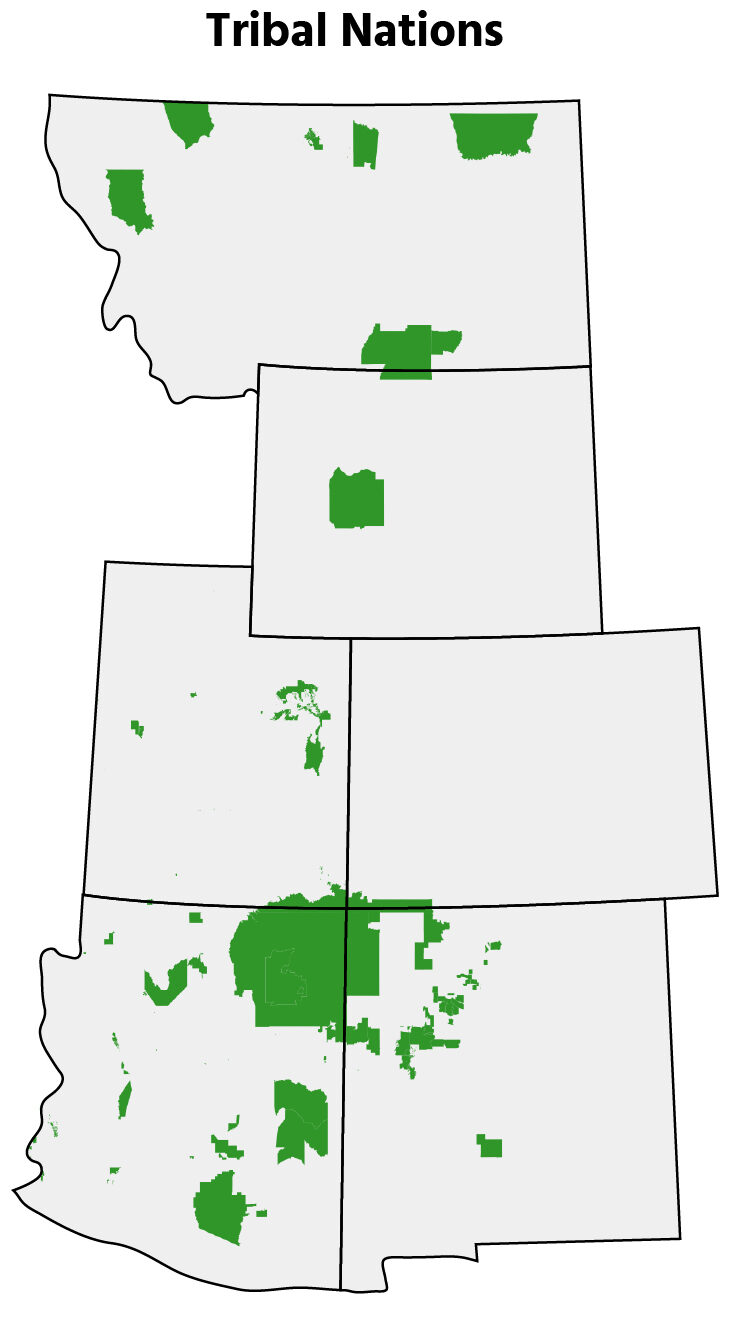Intermountain West
“What I’ve learned is that every community is unique, and that as we consider how these investments flow, that there are place-based strategies that we’ve got to craft in partnership with communities.”
– Jennifer M. Granholm, U.S. Secretary of Energy
Rapid energy transition is critical for the Intermountain West, a region characterized by fossil-based economies. Population and industrial growth are putting added pressure on a region already strained by water scarcity, wildfires, and persistent drought. A new carbon economy has the potential to bring new clean-energy jobs to the region and also help mitigate the impacts of climate change, but buy-in from local communities is key.
As part of its regional assessment, I-WEST is examining the challenges and opportunities related to energy transition. For example, how the abundant natural resources in the region can be leveraged in a new carbon economy, and how existing fossil-based industries can adopt technologies that will enable them to enter into new energy markets.

Fossil-Based Resources
The U.S. Intermountain West holds significant fossil-fuel resources and has historically depended on fossil-based economies for revenue and employment. For these reasons, the region is poised to experience energy transition rapidly, which will significantly impact local economies. The region is composed of urban and rural populations, with Utah (90%), Arizona (89%), Colorado (86%), and New Mexico (77%) having higher percentages of urban population compared to Montana (56%) and Wyoming (65%). Across these states, the I-WEST team is investigating societal readiness regarding energy transition, as shifting to clean-energy economies will affect local jobs, businesses, families, and environments.
Tribal Nations
Another unique aspect of the Intermountain West is the numerous Tribal Nations (61) in the area. Many of the Tribal Nations have historically depended on fossil fuel based–economies for revenue and employment. As part of its place-based approach, I-WEST is engaging with Tribal Nations to better understand how energy transition must occur with respect to the Earth, helping to keep Tribal communities together, and creating opportunities for next-generation Tribal members.

Renewable Energy
Sources
In addition to fossil-based resources, the region has significant commercial-scale renewable energy resources that will play a role in a new green economy. With solar energy in the south (Arizona, New Mexico, southern Utah, southern Colorado) and wind energy in the north (Montana, Wyoming, eastern Colorado), the region’s potential for rapid deployment of renewables is significant. Geothermal energy recovery also factors into the long-term energy transition across the Intermountain West.
Severe Drought
Most Intermountain West states have been facing prolonged and severe drought, and given the interdependences between water and energy systems, water management is an important component of a regional energy transition plan. Water is used in all phases of energy production—in electricity generation, water keeps power plants cool enough to function safely and efficiently, and in oil and gas production, water is used for hydraulic fracturing and enhanced oil recovery. Water is also essential for most renewable energy, including hydropower, concentrated solar power, geothermal energy, and bioenergy production. Many of the technology options to decarbonize these energy sectors also require water, which is why I-WEST is investigating water treatment technologies that can be deployed to either use existing waste water streams or recycle water produced in decarbonization processes.



